Tying it all together - Next steps ... Douglas C. Engelbart. 1.* - unedited transcript - ...and this is the tenth session and it's entitled "Tying it all together: Next Steps" and I cut the slide productions into two parts for the first and second part of the session. This is one in which normally was scheduled ourselves months ago. Laying
this out to sort of tie it all together and in the amongst it there was
a statement about saying OK, Doug was suppose to tell you how this all
happened. And so, I just have to tell you up front I started making a bunch
of slides about how it all happened and it just went on and on and on about
this idea hit me and then I couldn't do this and then I realized that etc...
and I threw it away. So I've got a much shorter way of building into giving
you an overview about how we've, sort of what we've been through in the
past and then try on converge on
Anyway, the sort of why and how did this strategic frame work evolve
and that's crevolve and I said and the recapping the entire colloquium
content via what I call a paradigm map and for some years I was giving
presentations with this paradigm map and so I'll slip it in there.. little
bit. It sort of emphasizes this belief that I have that prevailing paradigms
are such a compellingly important factor and how... how or how are not where
society is going to get ready for it's future. So Anyway, and so... then,
if all of this is a... it's a strategic sort of opening up of a campaign
and a sort of here's how we can approach the future. Well, we'd like to
get it started so today we'll bring up some more of the issues at several
different levels about getting it started, going at it like this which
includes sort of a general call to action that's sort of like saying, "well
if you want to see it happen, people are going to have to get active in
it like this."
So then in a general statement in the first half and the second half we'll get more specific about that. So anyway, this has been essentially a lifetime goal. At least I said at about forty-nine years ago, "any day now." One Saturday forty-nine years ago in the spring I sort of made a commitment and I had made a partial commitment up to that point. But that Saturday when I began to realize that all the other thing I was thinking to try to do got to be more and more complex in the world and trying to save this for that... a crusade in the world. So I wanted... I just broke through and realized that the world is getting very complex and the problems are getting more complex and more urgent and they are issues that have to be dealt with collectively and if our collective ability to deal with complex urgent things isn't increasing fast enough we're gonna get swamped. So what could be done about that? So that's what was said about this career. So it's been forty-nine years of underlining looking at it because it became something built in that I just intuitively was certain of that there is a great deal that the world could do about it and that it would be important to do it. Many of the ensuing years when thing would get really oblique you know... I'd be... I had been fired or I had been told that, "yes, you can continue doing this but you have to be reported to this guy over here and there are going to be no raises for you, no reviews, and stay out of trouble." You know, and you say, "why am I going this?" and you go through the thinking about it and say, "every year sooner that the world will get the idea that it really could boot strap it's way into a much higher level of collective capability. Every year sooner could make an extremely significant difference so, if I quit now it might make how much difference. You know, take two months more or two years longer to do it and that could be a significant factor." So that really has been a lifetime goal and I'd really like to communicate some of it. It's not an abstract thing that oh boy I sit there and come across this and it's nice to deliver a paper and then go about my business. This has just been my life and it's just driven me and this colloquium session has just been extremely... extremely sort of galvanizing but also really challenging because the problem it's sort of a mystery to me all these years. Why aren't
I getting across? Why doesn't everybody see it? And I honestly don't know
but I just know that okay someplace there is some magic of marketing or
something that would do the job or else paradigms are still not nearly
aligned enough. Anyway, the prevailing paradigms out in the world are the
World Wide Web and stuff. It's really moving so maybe it's close enough
now. These issues hit me even back in the fifties about paradigms and scaling
so I talk about this thing to people and somebody says, " well, interactive
computer use... all I need is at least twenty minutes of turn around time.
Anything lower than that, I don't see how I can use it."
And somebody else says, "All you're talking about is information retrieval."
No, no, it's more than that... or cognitive psychology... no, it's more than
that. So anyway, a very important study I did was on dimensional scaling
and so it really brought home something that small changes in an environment
usually brings small quantitative effects. Larger changes start producing
qualitative effects and many of them are surprising. But large changes
really do us like.. oops, really surprising differences because you're
just not oriented for how much everything is interdependent and something
change enough and you don't realize in the way you just view the world
that they are interdependent and that thus you'll start having other changes.
So that experience just set me up for really realizing that the paradigm
was all important.
So with kind of implication we said, "what if humans were small as a
mosquito?" What would you're relative design characteristic be? Well, you'd
just be terribly over structured. And so what if mosquitoes were as large
as a human? They would be terribly under structured. They could even stand
on their feet. If humans were ten times taller, wider, etc... we went through
that one time and realized that you'd be on the floor gasping for breath.
If gravity was ten times weaker what would have happened? So if digital
technology was smaller, faster, cheaper--by a factor of a hundred, thousand,
million, ten million? Okay, that's the similar kind of thing that going
to hit us. That digital technology is coming across and it's just really
going to be so much cheaper and faster on the broader band and so just
that alone can just turn our world upside down. Let's wait and see. So
anyway, this control by our paradigms.
So, in the face of the greatest avalanche of pervasive, and pervasive is important. Pervasive global change ever, ever, ever, faced by human society. That's the paradigm scale that I see. Nothing of this scale in the qualitative sense since maybe we shifted from hunter-gatherer to agriculture. Made a huge change. But this is going to happen very much faster and big and change. So our paradigm-limited perspectives dangerously fail to recognize the consequent range and depth of either the threads or the opportunities of mankind. So this is just basic to all these things I've been studying in. If there's someway that we can get people to start looking at that more detailed, I'd love to join groups to actually start working on it and say, " Is that just my intuition, or it is something for real? And Am I once seeing something that it distorted or are the other people not seeing something that is inevitable?
So this would
be very important. So here's a paradigm map I made and I used to use it
quite a bit. So every one of these boxes around here... and what we're going
to do is just step our way from objective, capability infrastructure... step
our way around there clockwise. And each one is a stage of thinking and
it sort of involves a shift in some concepts etc. like that and paradigms
like that. So this first one is saying, OK the objective... well coping with
complexity and urgency collectively and in high performance and then we
get to improvement strategy for that. So we say, OK what do we do next?
So as we step through this box by box... the box will be having the red border
on it and it will appear in the middle of it the sort of a diagram; some
of them graphics that you've seen before etc. But it sort of shows how
they build up. This is in loo of a review in detail this is going through
with the thing.
So anyway, the key target customers the human organization for me. So
yes, individuals can be augmented considerably but their impact on the
world and the value really gets to be how does what they contribute integrate
into the collection action that is going on which is the value. So anyway
the collection IQ we talked about enough to say well, Engelbart thinks
it's a real, real factor and yes I think that if you put a big envelope
around any organization and judged it by the external appearance by what
it does like that you could say, " Oh, absent organism that I could judge
to see how intelligent it is. How well does it keep track of the outside
world and how well does it cope, etc., etc." So it would be just terrific
if the world got interested enough in this thing to work up sort of measures
and calibrations and say how do we get a rating... so how do we get a rating
for, you know team or your school or your corporation or your state or
your country. A rating for it to see how well it seems coping in this IQ
bliss and like that. I think that would be terrific if sometime we could
get measures like that and it really will help everybody see were his organization
stands. So anyway, and as with biological organisms evolution happens.
So spurred
on one hand by sudden mutation of radically improved " nervous system"
that what the digital stuff is essentially equivalent to and the fact that
heavily by environment changes in their ecological niches. Evolution of
all other organizations and institutions is simultaneously accelerating
so double pressure on an organization. It's evolving internal capability
improvement, while adapting to radically changing environments. So either
one of those would be a challenge but when they're happening simultaneously
at rates and complexities we haven't tasted before, that just means we're
being pressured to tie like that. So an organization's effectiveness depends
upon its capability infrastructure.
And this is a concert that evolved back in nineteen sixty-one or something for me. Just, oh my god! Yes it is. Bigger capabilities depend on a set of smaller ones etc. And for the emergent large technology change, our paradigms for guiding and applying technology have to be significantly modified.
If you really look at that whole infrastructure capabilities. So here's the picture that we can start with. So we went through this exercise once before. We just said, "OK, by infrastructure we mean the top up here is a salient capability that you are concerned with is dependant in turn upon aggregate capabilities of lower order capabilities and those in turn of lower order etc. So it's not hierarchy. I missed called it that for years... Hierarchy, capability hearty, Right in the middle of one of my seminars someone said "It's not a hierarchy and I looked and said "that's right, it isn't." So that sinsidine info structure and then the pervasiveness of changes within it that will be caused fairly directly by these new technologies mean that all kinds of change are going on in the public, multiply affected by older ones. So we said, "ok, is that the picture we want to deal with?" Well, lets see, this is what we actually had in the paradigm map, that the concept of that info structure...
...in paradigm sort of consideration is very important. This has been for me, very very important. So what's next? Well we go through some evolution.
Looking how you look at the capabilities. I said ok, the lot of the world; teckie orientated people say "oh boy all these kinds of technology things can come in and that's what makes the difference." So he says "yea, that's right, it really does, that any one of these things, data, retrieving stuff like affects many places in there. So sure enough he says, "if this is changing rapidly look what's going to happen". Yes, but that is only part of the story. This was the breakthrough for me, you know, forty years ago was saying oh yes, the humans there, and the difference the way human sensory perceptual metal motor activity...
are also producing, how they work in there, and if it is going to change quite a bit these things have to change. Now you have what some practice so okay. The same basic capabilities are there but you need to start learning more about things. Oh, learning about things? Oh, that means you'll have to... you're gonna get new skills and knowledge and training etc. like that if you capability infrastructure's going to change.
That's right! That's right! So okay, this is what? You can go by your technology and somebody will train you And he says, "Okay, great. But is that all?" Well, let's see. Nope, let's see. There are a few other things that are going to change concurrently with that.
Many of the procedures by which you do things cause some processes methods language. The very language we are using has been affected already. It's going to be affected immensely in the future in ways... it's one of the surprises in my estimation of what's the lying weight for us all as the kind of change that's going to come about in language. Fundamentally language is, is a way in which the concepts you hold in your mind gets symbolized. And then, with those symbols it turns out there is a difference in the way you communicate symbols in loo of actually fumbling the grapple with the concepts themselves. And oh, if you get these symbols that you can use externally then you can communicate with people. Oh and then you can put them down on some media and start manipulating them in loo of doing the thinking and processes. Oh, if the computer can help you do that then you can probably start doing different concept manipulation. Oh, also these externalized symbols that you've been using like that, grew and evolved in an environments that are very much different than now. So maybe the very symbology we use to represent our concepts can start changing because a computer can lay them out so quickly and much be fine way. Oh hey, maybe we can back down into our machinery inside of our heads and start redoing some of that so that we can take advantage of new ways that the computer can respond to us... ...since what we're trying to tell, do, signal to it like that, portray things in all of the senses etc. So we may just find that, you know in twenty years or so that people look back on us now as sort of dark age people that, you know had very crude ways of expressing language, very crude ways of manipulating etc. But anyway the outside of this is not to be more fashionable about how you can do your thinking and working but it's how much more effective we can be as a society to handle the complex problems we see... we do that. So anyway... So this became sort of this opectuich. All of these things inside here are going to be co-evolving with eruptive changes on the right hand side. And it's just... You know I've told this colloquium several times about experience in the seventies when everybody thought about interactive computers automating the office. And that's what they assumed; that was all the rest of us going to stay the same except you automating what you used to do. Well that paradigm was so entrenched and strong that we just couldn't in our group, even though we were demonstrating things quite dramatically different which now we get awards for, you see. That in those days the prevailing paradigm was so entrenched that it just without much of a quival, just pushed us right off the research world. And the peer review from all sorts of sources: Universities, research groups, government, etc. just said, "well, obviously you're in the wrong direction." And for some of the reasons that we've talked about before and some of them... My friend who's much better histrionic to nelson last week said you know, "Wizzy Wig." Well Wizz Wig was a great invention for a way for what you really wanted was to really see better what you're gonna do when you do high quality printing. But it really limited people by saying, "of course that's you want to see with a computer interface because what it's for is to produce paper... print." And you start saying, "No, you can fold it up and get all kinds of views. " So we're gonna talk about that later in the second half of how somehow we can start more evolution going and it's optional views etc. But anyway it's been great. So this picture here just tells so much. And its going to pop up a few times again. I'm warning you. This is o surprise to the regulars here that... that keeps coming back to it and you can say, "hey, we've seen that before." And what I like to do is get to sit down with people and really bore down in here and say, "let's just take this thing apart and see what kind of things we find in the details." So anyway, so that was the kind of thing when I called this an augmentation system.
Excuse me... So your whole capable infrastructure is available to itself by this kind of tool system and human system and that's just fundamental. So as a part of the paradigms that was extremely important to set that there.
So we go to the next thing and it says, oh we started making some simple ways in which we showed two dimensions. One is the tool system, how sophisticated it is out there, and the other is the human system likewise how sophisticated. And this was a bad representation in the old days and I apologize for it. Later I figured out a bunch of better ways in which societies distributed across there. But in any event, with the world moving fast out here and the technology, you see that opens up all sorts of new opportunities on the human system side and that if just essentially a new territory; we call it the co-evolution frontier. But that was very important to put that down as a paradigm as a co-evolution. And one thing we know from looking at the infrastructure is that it isn't a simple thing of this thing is evolving by a factor of three, then this thing then has to chance by two and a half. The technology changes in a lots of ways and pervades throughout the infrastructure in many impact ways which changes much in there so that it really isn't any single dimension to the way in which you can say the human system changes. It's a multi-dimension way in which those dimensions are co-evolving themselves. So the co-evolution is really on a many dimension field. And so finding your way into the future of that, it's just a mesh. It's a hell of a mesh. Anyway, so that. Setting up the paradigms it would just... very import to start getting a feeling of that and if you know, we go ahead with talking with people about improving infrastructures in the like, and we can't sort of all be looking at this, as sort of much change and sophisticated, interconnected, interoperable changes that are going on in there, then we are talking different languages. And so, the world today... most of the leaders that have to run an organization are just conditioned to be tactile oriented for what's happening there and how you manage it like that and they don't seem to be oriented about think about complexity things like that. They've been dependant upon other people telling them some simple way to deal with complexity of a design or something. So, it's just a hard thing to communicate. Assuming you all believe like I do, then what would you do to go out there and try and get the rest of the world more oriented about this kind of co-evolution.
So anyway this is much more of a real kind of a plot that I assumed that you went around the world and you checked on different societies there, they would have a distribution. I would guess something like this. That some of then are quite primitive, but never down to zero human system. Sometime their spiritual etc. qualitative things about the way they relate to people could be superior to what we experience in our world today. But anyway, there's the distribution of them. And so we'd say that, that well... that probably the people were listening and talking to us feel that they're ion some organization quite a ways up here. And then the boundary here and the technologies been inching to the right steadily over the decades, centuries but at such a pace that it didn't really stress everything and open up changes in the human system. Just consider elevators showed up and a... Oh so suddenly you could build multi-story buildings. Oh but how many years did it take before that evolved into those buildings appearing and the changes in urban life considerably about that and things like that. And changes in the way commerce and business was done because people could be grouped so much more and like that so... anyway. But all of that was slow; decades. But today what's going to happen? Well we say, "This kind of change rate is a disparity between the changes in out external environment and the changes which our organizations can cope with.
So it's much
more like this. Isn't it? That technology's has moved the tool system way
out here. So oh yes boy, the web and e-commerce and everything else like
that, wow! It's just a lot of unexplored territory here. But that's all
right. We know... We're buying from a vendor who shows us the tools and ways
to do it. So we've got the path. And he says, " Oh... oh... tell me how that
vender knows what path is through there. Oh they're top of the marketplace."
I know, but what they're clever at is dealing with the market and grabbing
market share and doing that, and know whom to deal with in your organization
to sell better etc... and are they responsible to you or the other stake
holders in the organization. Are they... have any responsibility to the optimum
evolution of the organization. Well, not really. But anyway... so these are
the things to think about in which I really wish there was more dialogue
I could get with people who know of things in the marketplace that try
to piece that opt together just to say, "as my instinct about the marketplace
isn't up to it, that what's necessary for the evolution for moving out
into that space right is proactive and user organizations who are in the
business themselves of sampling and trying to decide what's going on... taking
responsibility instead of sitting there and watching everybody else. "Oh
well, I mind as well do this." So... that's one of the paradigm issues about
this thing is who's going to take responsibility? So now just things to
think about is a little thing called nano-technology which we had speeches
on, talks on, and a... I believe firmly is just, is going to explode. And
so it's inevitable a consider.
For instance, you'll be able to hold your hand in the way of speed and power and storage as much as now exist in the whole world. So I was told this by Eric Drexler a couple years ago that that's one way to measure... say what likely to happen. And I believe it. I did enough scaling studies and things like that. There's just no reason in the world why that isn't going to happen. And so as it does, what's that going to do to everything you look around? So that you can implant a personal computers. I used to kid people about that thirty years ago. I just loved it. And intelligent agents, which you can utilize. Okay you have at your control, a bunch of slaves that maybe aren't as smart as you but they're trained and they'll respond. So what does it take in your part to learn how to make use of a whole fleet of smart agents, smart slaves. And then of course the other side of that is, hey they're continue to going get smarter. Oh how come, how soon are they going to gang up on up and say how needs the humans? They'd run a much more efficient role without us. So that's one of the real issues. So anyway those brought me the feeling like, this is more of the picture about what we have to be within...
If you consider the time constant for an organization to move in this
space and you consider that this is probably something like the space we
ought to think about whether it's... this is five years off or ten years
off. It doesn't make much difference because it... you know, we've got to
plan for what's gonna be in ten years because we're not gonna build up
much momentum and learn much how to move in this space otherwise. So this
just becomes the picture. So it's, again it's a paradigm issue. It's like,
you know how much would you bet on. There's a lot of out future people
are just implicitly betting on what that's going to be like because we're
sort of passively going along with the preventing paradigm which is all
things are little different. We have to change. E-Commerce are going to
make a difference and etc. But what about the school system, the education
system that way and there are so many problems tat are rising due to this.
Excuse me. So anyway this is just a very big, very big paradigm issue here.
So anyway, about that lifetime thing. So that's my goal, to you know, as
much as possible to see if we can boost mankind's collective capability
for coping with complex, urgent problems.
So then you make the observation. Oh purposeful pursuit of item one is itself a complex, urgent problem. Oh, oh yeah. So that started some real thinking back there. So one of the things it does is lead you to say "okay, if we're gonna really complex and urgent we're gonna have to invest in... in that significantly.
So it's a complicated sort of thing and if normally our investment produce stepwise functional changes in our capability. And if we thought just like any other investor would think, is there some strategy I could use where I get compounded returns on there. So the world is full of business people that are just at that totally and say that's what runs the world. And yet, you try and talk to them about, hey there's a strategy for how you go about changing the way you organizations work that could actually get that blue strapping. Oh, Oh, well, all right, they, I mean. So one of the things I like is, hey if any of you've got some idea or anything about this, come help us sort of make a picture and try to communicate to the world. And either that or communicate to Doug Engelbart that he's just way off, which could happen. So anyway... So this brings us a strategic question. What would yield that compounded return on investment? So it's just a question so... We ought to have business people oriented, business people flocking around to say, " Hey, what would?" Well the first place I think investing and improving their own capability and their organization. They'll do it on things about efficiency and the product line or cost savings etc. like that. But we're talking here about the collective smarts but we're also talking about improving their improvement infrastructures. So that's something that it doesn't fit the vocabulary very well yet. So we come around to this thing before and we say, " Oh once before we came back on this diagram and said, "If you organization has a capability...
I mean picturing the capability infrastructure which organization has and depends upon and what level and how prominent does the capability for improving your organization. And he says, "Oh well ah... we have a human factors person that's had a degree in management, something or rather." Oh I see. And we go to these lectures every once and a while about something and I see. And we've got consultants out there that are telling us the latest thing. I see. Okay, but... but what is really the infrastructure? What's the processes? You know how do know how much you budget for? Oh well... and so, this is another paradigm thing that if organizations don't get sort of explicit about their improvement process and actually know how much they're spending on etc. Then it just doesn't seem to be any chance at all that they're going to be able to cope with the changes in the world. So anyway... So we came across ten years or so, this kind of a picture that we talked about quite often in here.
We said if you divide the activities and your organization into at least three categories and you say activity A is that which does it's everyday business and uses it's everyday knowledge etc. that's important. But then you say, if your any activity at all somebody wearing a hat for a half an hour a week or somebody assigned to it as a head of a committee or whatever, is there to improve the capability to do your everyday work then, let's categorize that activity as B. And then let's just make an assumption that as that frontier is exploding out there, that we're going to have to learn more and more about how to figure out were to go which is a B job. And how to get there, which is a B job. And so, you got to raise the capability level of the B activity. So that's another level of capability. So it turned out that this was sort of like a doodling thing and then to begin to fall into place as a very useful way to think about.
So you say, "Okay, this improve... this is the picture of an improvement
infrastructure element within you organization and it has pieces of it
that flow out all through there." And when I... when I became forced out
into the commercial world and then into the industrial world, I wasn't
a very good fit but I learned a lot and one of the thing I began to observe
is, every time there was something relatively significant that was going
to be changed, the manufacturing or even sales or marketing or you know,
planning... they'd have a committee from around inside the corporation. And
these were guys who all report to the same boss until they got way up there
who was involved with it. It was really like a community. So I got to thinking
about how prevalent is the idea of a community. And within big organizations
that's all from part of the improvement. So I wrote a big paper in the
eighties about mission and disapline oriented communities and saying they're
important. Mission oriented one is like the people that belong to a professional
society who all have the same mission of curing cancer or something and
I mean discipline oriented, that's it. And a mission oriented one is all
the people involved in a you know, focused project. And they often come
from different parts of organizations etc. to do that. So then I said,
"okay, they all work in a distributed knowledge workshop." So I start...
coined using the term for a communities knowledge workshop. And then I
says, "Oh what we want to deal with is an augmented knowledge workshop."
So I started using that term quite a bit, which is really effective on.
It fits into this picture very well to think about okay. So that's what's
going to go through a revolution is this augmented knowledge workshop that
we work in individually and then there is communities. You work in one
community, you're sort of in one workshop. Another one like this. Excuse
me. I could... I could probably say I got so excited, I forget to breathe.
This power of having an audience just out politeness has to sit there...
great. So anyway as a paradigm map is evolving in this sense at a... is pretty
good. So I says, so how about this investment criteria strategy? Oh then
that leads to this, this a bootstrap strategy. So yeah, add one other thing
to the one we talked about before.
We observed that... that goal one is a complex pursuit. And you say, "okay, but if you make headway in goal one since it itself is a complex urgent problem then, if you make headway in being able to improve our capability collectively to deal with complex urgent problems, we ought to be able to deal better with the complex urgent problem of pursuing complex urgent problems. So this three says alright, we apply that capability in our pursuit of that and anybody that... that does any kind of dynamic assessment or something and looks at feedback and compound interest or something says yeah sure, of course. But okay, then that's the kind of thing that evolved out of this thing. So just looking at that and says, "bootstrap strategy."
Then you says, "Okay, if any of these groups is producing something for the next higher one that it can use itself; feed it back. And some of the B things that produce a new capabilities to use an A, boy it'd sodafet it didn't use it itself or if maybe feed it back down so C could do it etc. like this. So we just say, okay, then its... here's a picture to take with this thing. Suppose your out source the... help you get for doing your B work. And so the consultant comes in and he says, "Okay, here's the way we're going to do it now. Here are the brand new computer tools. You can do it in collaboration and all of this and go on and on. We'll tell you how to do it." And you start scratching your head and you says, "Well, why don't you just show us?" And the jaw will drop. And you says, "No I mean your consulting organization must be working this new way so wouldn't it be a lot easier if we watched how you work?" "Oh uh... you're..." You see, this is one of the real tests. So in fact it'd be a very interesting way of which if more and more people had gone on to this kind of thing, started asking the people who are so much pushing the technologies out to the world and saying how much you need it and how the value will be and says, "okay, let just see if you think it's going to be a revolution in there let's see how you use it to do that." I think that that would make a very significant different in the world if we turned to those big corporations and just said, "Well look, show us inside your work, inside your world. How much difference is it the way you can launch or assess new research things, new production techniques etc. and a... how much are you to deal with outside information of what's happening in the world that's relevant to you. Where does it go? How is it used by everybody? Who does the assessing of it and things like that? So show us the dynamics of your knowledge workshop and a... So anyway, when the world gets to the point when they start asking those things and even more advanced when they have a start of measures. You know, the thing that the quality people were telling us when one of our sessions about benchmarking and measuring. Well this would be extremely valuable in the world if we had benchmarking measures for something of the equivalent of what's the collective I.Q. of your company or of your research group or of your professional society etc. or of your state or of country. So this would be fabulous to get started thinking and comparative stuff. So it would really be a turn around. So maybe all we can do in the world about getting this going is to start pressing for getting measures like this put out and it'd be interesting to see what kind of companies would set up and start changing. Anyway, so then we say okay, the next thing in that bootstrapping strategy the kind of thing that could really feedback best is that which we started talking about there up in the objective.
In which we call collective I.Q.
And we says okay, we... Working together we depend on collective knowledge and a... that's got to be recorded if there are any big groups moving any kind of dynamic complex world and the computer and all that and a... sharing a knowledge and a... the hypermedia etc. is all making a big difference for that and then the questions about how much more difference but... Okay collectively depending on that and we say okay, "Yes, we've got this model and the thing we call a dynamic knowledge repository and we sort of keep talking about the three major components of that repository of being these things and... We won't dig down into those today. We've done some of that in the past. But anyway, it's like saying okay... that how many organizations really fly like that effectively? iSo he says, "Okay, well just call that representing our collective I.Q. that that's where it's going to come from; is people swarming around and operating on this. And we pointed out in the past that maybe each one of these nodes around here is an individual and this is a team. Well great, each one of individual is going to have his or her sort of repository they use two. But there is this common one that's concurrently evolving along with theirs. Or maybe each one of these things in the circle is a team or a division in a corporation and this is the big corporation. And we know that concurrently they are all changing so... this concurrent currently business up here is just a key kind of aspect of all this. So we have to say, "Yup, we've been through this before." And we say, "Yup, we hear concurrently." And that's the big challenge is that... that... and it leads to the next issue there of a... Well this one way of looking at it collectively.
This could be a big corporation and all the little pieces or big conglomerate and all the minor corporations or all the individuals working in a professional society and trying to cure something etc. So that's... that's an issue and we'll look at it later about the kind of scale in which you find that sort of thing going on in the world and a... So the other kind of issue... So we, we coined this sometime last eight, nine years ago.
We coined this term CoDiak. We said... I'd be nice to isolate just a major
subset of the capabilities an organization needs to have in order to represent
a higher collective I.Q. So we just finally came up that it has to be able
to do this well. In concurrently develop integrate and apply knowledge
and a... so I... How serviceable this acronym will be. We have to get more
dynamics in the world before we find out. So then, then as a... You know,
what I threatening to do in this colloquium is... I found a photograph of
me milking a cow in a cruddy barn that my family had on a little plot of
land and my father died when I was young and we had this acre. In part
it was vegetables that we grew and we kept a cow in this little barn and
the neighbors let us run the cow and their pasture. And it was my job,
because I was the older so to get up morning, night you know, go do the
milking. And, alright... So my sister jokester that she was, sneak up there
with... I don't know where she go a flash anyway but... there was a flash of
a picture and there is this fourteen year old kid sitting on an upside
down bucket with this sort of dirty straw around the floor. It looked all
just perfectly normal in those days. And very rusty parts and the cow passively...
I think uh... what did we name her? She had a beautiful name, anyway... But
looking at that... Looking at that and realizing how far the distance was
from there in so many ways. Because sort of a country kid that really was
different because even in the depression, very poor we lived happy. We
all family get together joke. We didn't feel deprived we just felt poor
and there's a real difference. But I also felt different. I knew I was
different when I went to school. Okay, so I'm different. So it didn't panic
me or put me in anything like that so, I sort of grew up being used to
being different and not quite understanding how other people thought and
they measured their social life. Like the crowning time was when I was
a junior, sitting there looking up and down the rows and a... for the first
time looking at all of the shoes and I was the only one with old fashioned,
high top, you know farmer shoes. They were my only pair of shoes so that's
alright but... Then I looked at that a second time and I was the only one
with comet around his shoes. You know, so... Oh I'm different but you know
it could have turned me into something mortified. Oh my god. No, it just...
hey you know, those were my only shoes so why should I... But anyway, that
picture alone in there sort of tells me all that about that... somehow I
grew up... I just wasn't the same and I didn't think the same and someone
like that and I wasn't particularly proud of not thinking the same and
causing a lot of trouble at times and so fourth and when I went to college
I almost flunked out of a state college for the first two quarters because
I was trying to learn everything that they said. So I didn't... I never did
really get smart about how to study or take tests or something but I ended
up with a four point when I graduated for some reason. I got to graduate
school and... So anyway, I just... I just looked out and says, "Well okay,
that kid never did get to be like everybody else and it doesn't really
sink in to him that that's something he should be; the same." Just okay,
I'm different and I a... my sense of humor takes over sometimes when it shouldn't
and a... Anyway, so... But that was something about coming out with this very
different sort of strategy. It's sort of part of the same thing. Well it's
sort of what I saw when I started thinking about it and a... it meant so
much to me about what the world was that I still keep at it. And a... and
I know that a lot of people think this jerky guy... why is he still talking
about that? Everybody is doing it already. And he says, "Well I don't understand
that they are. My picture is very different." So anyway, I share these
things with you because I don't just naturally think assume that; look,
I won a lot of prizes for things I thought
Student: Apparently not. Oh. Anyway so, so I'll keep on showing you these things and telling you and just because if it sounds strange well you know, it doesn't really defeat me that itself. But I really wish we could get people to start investing some time and energy and trying to go after this. Because like I say, every year sooner the world will start moving that way. It could make a big difference. And that's only gonna start moving that way sort of one person at a time for a while. And so that's the way it goes. So anyway, what I got in McDonald Douglas as one of the products like that, I got some kind of rude awakening and often some rude treatment because I was so naïve. But in amongst of looking at the manufacturing world, what they were doing in it and like that, the number of people started to spend more and more time with me and they showed me interesting things. Like one thing they said, "Well, the system we were calling it augment then really could do a lot of inter-linking with a lot of people." But they said, "Hey, look what happens. We've got... There are actually like six thousand companies that are cooperating with the two thousand or so people inside the aerospace firm in the design and manufacture of a fighter aircraft.
And I understand its thirteen to fifteen thousand companies in a big
airliner. A he says okay, they are all a community working together and
the kind of communications that needs to go on among them is, is detailed
and it's key important. And when you're first formulating it you've got
to co-design with some of these suppliers etc. So specifications have to
be laid out and adhered to that you're contracting to produce this part
under these specifications of testing and finishing and all of that. And
so, you have to be really clear that you are working to the same specifications
that we think you are etc. And you say, "Boy, the way you can interlink
all that thoughts would just make the whole thing so much better." And
we starting looking into it and figure out ways in which you can do it.
It just became so obvious that you're not going to get the kind of interlinking
collaborative sort of tying down coherent knowledge base like that unless
there is a basic common open system in which the knowledge containers are
meet and address. And so young mean John Bosak has been launching the whole
thing about XML which is a great direction on that but in those day, in
the eighties nobody heard of that and it would just became so real that
we got... We were saying that the business of trying to promote the evolution
of an open hyper document system is critical and it's still something of
that sort still is. And I don't feel that the movement towards the open
standards is balanced enough and moving fast enough and can deal with the
need of the evolution that we're talking about. So that becomes a very
basic part of the picture of what has to be done in that respect. And so
the second period you know, during the next hour and a half that this is
something we're going to be talking about quite a bit and this is... I know
that a lot of people have given us feedback that said, you know the tekkie
thing is we know the tekkie world there but look at all of the other problems
involved with it. So what I want to point out is that in all the level
of this infrastructure that exist in there like this, it's like if you're
gonna build a new multi-level big thing like this, you gotta have the foundation
that's strong enough to take this new structure that's going to be a lot
more integrated with all the levels in it than before. And that foundation
to me, it sits right into this business of the marriage of the open hyper
document system with the changes in the way we think and work with it.
That those have to be something... You're gonna collaborate with somebody
and you put together on a project because you're both civil engineers or
both marketing people or something and you gotta come together with some
consistent plan and if you can'' talk together in this new way, then you're
in trouble. So... So anyway, this global interoperability was just a big,
big, big thing and as we said before we went into talk about this open
hyper document system.
And a... We've done several times written papers about it and some of those papers are available on the web. They talk about some of the details as some of the things we learned and the system we built that just adds a lot of value. And we know they have a lot of value because we lived with it for years. And so, in the second hour today we're going to be pointing out some of those things and then some of the people sitting here or around are going to sort of talk about the stages we could actually launch in order to do something like that. Even if it's voluntary. Even if it's just inviting the world to go open source and explore it with us. So anyway, these are general terms here. That's to facilitate collaboration, coordination, and collective work,
real work; to capture, integrate, and manage the emerging heterogeneous
knowledge; to enhance access, maneuverability, and reutilization; scaleable,
interoperable across domains etc. All kinds of virtues and things like
that. Those aren't terms that you hear very often now but, unless people
share a similar perception about how much more there is to learn about
how to use these sort of knowledge packages and what they should have is
properties in them and functionality on them like that. If you don't have
a common picture, if you sort of think that the way the web works; the
web pages are now is we're there well, then we're not talking the same
language. So again it's a paradigm issue that affects very, very much how
seriously someone would take about considering this and going after it
so... So anyway, I just invite people to start getting active about at least
talking more seriously to shake it up. In our... In this sort of world that
ended up; we call the augment world, we long time worked on this kind of
a package for... that we call it through away e-mail. Because anyway... So
we've talked this in the past that shared files and e-mail all were interlinkable
from nineteen seventy on to any detail you wanted to and optional viewing
so a link could save; popped to someplace a say how you want it to be viewed.
That when you follow this link, I want this view presented to you because
that sort of depicts the issues about that citation issue that I wanted
to characterize. So there just grew to be more and more and more kinds
of viewing option specs than the language like that. And then we got his
journal system up which meant that it was a library like thing that any
organization could run according by specs and it meant that if you were
qualified to enter information there, you just submitted a document electronically
almost like it was an e-mail and it took it into its embrace and it would
give you either beforehand or then an identifier for that that stayed permanent
and guarantee that at anytime anybody used that identifier in a link to
access what they'd get was what was you published that minute and that
no one could change it. And a... if they wanted to update it, they'd have
to... When they entered it have to say this is super seating that earlier
one. So that anybody going with a citation link that would aim at the earlier
one would stop in mid-travel to say, it's been super seated. Do you want
to new one or the old one? So there would be more... smarter ways to do it
than the time we did it at the tie like that. But that just ... You just
have to believe me, I guess... It changed the way the dialogue worked; just
changed immensely from the way it is today. So anyway, and then external
documents were also catalogued. There were many things in there that would
take hours to show and tell, which is something that... Because of the way
this presentations we give here are packaged and webcast etc. we can't
give live demonstrations. So we give these things were a slide shows this
is one state and then here's the next picture and here's the next picture.
I'll give a few of those in the next hour. But one of the things I really
want to do is... is fix up so that we can get some demonstrations so this
and other systems around and have those archived in ways in which anytime
somebody say, "Oh you're talking about a feature? Yeah, we use that here.
I'll give you our own little point right to the demonstration segment where
the guy's showing about it and another URL: where there's a description
of it like that. And if you have comments to make you can do it. Or when
you get there and are watching that, the backlink management if you want
to, find out whom else is talking about that same passage. Either passage
in the video or my slide or in text or e-mail. So these are all things
that are just going to evolve. And there are parts of them out there
So he says, "Okay, we need explicitly recruited, equipped and trained, as though for competitive performance assessments." And here we're not talking about that you just designate the sales team or design team as going to be your high performance team and you give them a little bit more lessons in another. Sure they're moved up like that but, that isn't what we are talking about of a way to really move out in that frontier. So anyway, we just say no limit to the usual ways in which their fundamental sensory, perceptual, cognitive, motor capabilities and trained, conditioned and harnessed. Just anything... anything you can think of. Put to work for them. Strategically, seems best at first to be engaged as support teams providing special services to larger teams operating in current mode. So we've talked about that before and I would like to dig down into that with people to say more of a rational for why etc. or examples of what you can do. But it's just really very, very basic. So this is the picture we've used for a long time.
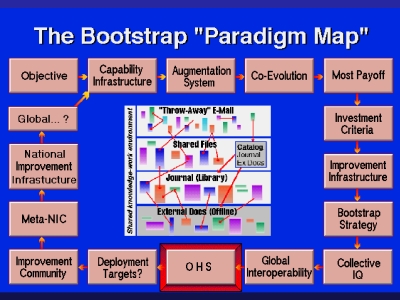 Fig.
26 Fig.
26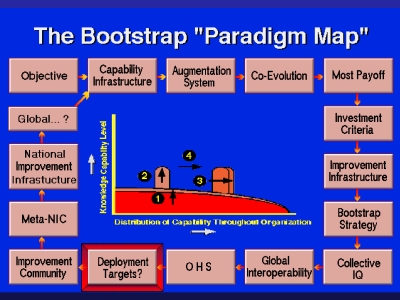 Fig.
27 Fig.
27In this paradigm map we're saying all right, here's the distribution
of capability to our organization and that curve is not... It would be some
kind of sideways "S" curve I'm sure. But the thing was is saying, one option
you can come in and say I'm going to improve everybody's capability. That
¬'s mode one of improving it. And a... this is sure you know, if... If you introduce
e-mail and everybody has access to it, you've done something for everybody.
But if we're going to get more and more kind of exploratory and dramatic
well what you're going to do... He says well, I really need to test it first.
So let's... Let's get some small, specially trained group like that and elevate
them in capability. But we need to do it so they can work with the rest
of them. And a... So that's part of the whole strategic sort of issue in
plan. Well another mode then is, if you have one like that as you can expand
it. That's mode three. Mode four is that you just duplicate it. So I couldn't
think of any modes by which you'd start bringing significant new capabilities
in an organization. So he says, "Okay, these are all modes. And strategically
speaking, which of those modes are the best return on investment. So anyway,
it's interesting. So when we were introducing things starting nineteen
seventy-four for the operant providing service that was just like in that
box I showed you integrated mail and file and journal and a lot of characteristic
and features in the there that were quite dramatic. And we were doing this
to people who had access to the arpanet, which committed to government
etc. But as one if the things we were trying to tell him is you, you, you
ah... need to sort of focus on specific groups and help them move ahead.
????Then every time they get together, we always hear about people saying
"you gotta make it easier to learn. It's hard." Until one time, one time
one of the guys was sitting there listening and says, "You know, I've never
heard that in my organization lately." And Elle says, "Well that's because
you know, you aren't bringing in new people." "Oh but we are." And he was
the longest user. When they go to figuring this out well, what it meant
was a new user came in and looked around; everybody else was a matter of
fact using it. No big sweat. Sure you don't know how but it's easy so all
you had to do was ask somebody at another desk. Sure I'll show you and
tell you. And it was just taken for granted about how they came in and
got assimilated and learned. And so there wasn't any of this big stress
like when new groups suddenly get plunked into the middle of it. So the
evolution ability of a group like that is something that is group culture
conditioned and something just to train. So if...
Peter: There is a fifth mode that you probably want to recognize and that's one of the most... I have the button pushed. I don't know if it's doing any good. The fifth mode is probably the one that is most common in the world business today. And that is you take something away from somebody and give it to somebody else. And so you create an indentation in your model and you move that inverted upside down somewhere else. So you've actually deprived a certain group of the resources looking on it as a zero sum game and I think in the practical world that's very common. I don't like it but that's how it works. All right, thank you. That's the trouble with a guy like him. He makes
you think. Thank you Peter. Well I'll get back on him later. Great... Anyway,
that's... It's just the kind of this of how it is so if you had a research
group that was building a dynamic repository, you'd like to start collecting
this scoop and information in the lower... in the case studies of things
that'd be valuable. So anyway, progressing around this... this says okay,
then the key deployment for high performance support teams and the idea
that we ended up with watching how things worked out in our own world...
Is supporting a larger, conventionally capable community, organization, or project team. So a high performance team in the middle as a support team is just, just a... So in a way, our trainers were acting like that and the fact we had the shared screen kind of capability from seventy-four on so that somebody could call up and say that they were in trouble and they could connect so... No matter where the two of them were on the network and they would both be seeing the same display working and then the trainer could say, " I see what you are doing. Hey, you know there is a better way you can do that." "Oh yeah, tell me." "Oh no, wait a minute. Pass me the controls and I'll show you." So then the trainer starts off operating it and the other person watches. It's just a big step ahead in the flexibility by which people out there started being able to sort of get help and depend upon people. And much more friendly thing than if was only talking on the telephone. That they're actually just... It was almost like somebody could; coming in sitting down next to you and showing you. And since they could just do it electronically, it was much more flexibly usable. So anyway, so... These high performance support teams thing was just kind of blew my mind and I really think that there is a great deal you could in the middle of complex projects for instance or the middle or any company. And when you talk about the CoDiak which was the concurrently developing, integrating and applying knowledge. That integrating role is sort of like a digestion and stuff like that. What all is happening in there, how do you sort of integrate as rapidly and effectively as you can so that people can go look at it as though it an up to date handbook. That's what we used to called it. So anyway, so the a... The thing about you're getting ready for that frontier these A, B, and C that we've talk about it become very important like that.
 Fig.
29 Fig.
29 Fig.
30 Fig.
30So we say okay, the C kind of thing is like a scout out in the frontier; is to finding out what's happening out there. Where can I help find a good place for you to aim at and tell you sort of more about how you can move better out there. Then the B is the one that is the, leads the wagon train that's going to go out there and like that.
[split par vE] So this helped a lot in clarifying for people what is this categorization like. And the common business of saying let's pull resources to do that exploration out there to help get a better idea of what's out there and what works and doesn't and what are the pathways by which organizations can shift out there. So that... it's just, if the frontier is suddenly gone out there like that then that makes sense. So if your paradigm of your organizational leaders don't picture the frontier like that then they're not going to be terribly responsive about the sharing business and improvement bending. But he says look, somehow we get evidence so pretty soon we'll start having cooperative sharing between larger organizations and the sharing of the C kind of information about how it is, what's out there, how they can move. But they'll be moving faster and they'll just... so I have to get examples. So we say okay, look for other organizations heading the same way and then say pull their C works like this.
So this was the picture we would give to people over the decades like that.
And say a dynamic repository is what that community best saw and then the community itself is bootstrapping itself by using the advance techniques for doing the work. And its C work is just an ideal sort of, way in which you put a high performance. So if you can make the actual actuation of that C community's knowledge work supported by a high performance support team, then you've got... You got something where every organization out there is sort of benefiting by the interaction with that and witnessing it and seeing it. As well as the knowledge that thus is better organized for them. So we say that an improvement community is now part of out paradigm picture and it's put in there like that.
So organization one, two etc. is apart of it and there is a dynamic
knowledge repository and it's in there. So we say okay, then in succeeding
years we say, oh what we'd really like to do is say, "let's make a neck
of nicks."
We're headed for the network improvement company was oriented just for how you improve organizations but, now we say, let's help a family of necks get better at being nicks.
And a... So that kind of... Kind of can get a meta-levels going in there. So he says, "Okay, if we really get this idea of these improvement communities and improvement infrastructures as over in this box to the right.
If we get that really starting to work, what's the limit for how big you can get an organization moving like that? Can you get a national improvement infrastructure? And so look what we've put into here. This is... the whole nation itself could have actually be represented by a portrayal like this but so could its improvement infrastructure. So what would a national infrastructure look like? Well, there's already one there. You know, and it's just sort of organically grown and different parts that work differently and big government agencies have one process of changing and improving. If you can believe it. That would be a joke, I guess. But a... You know and then he says, "Oh what about the legislative part of the government? Oh would there be any room for improvement there?" And he says, "Probably." But you know, for a representative government to understand well enough what's happening in a really complex world in order to establish laws and oversee regulations; get established. It's just more and more so you know ordinary people no way can they understand enough to do it. And no way is sort of current politics aiming at getting something that is socially or you know what civilization, as a whole needs best. I don't think that's... I don't think I'm being... Could I be shot... shot for saying things like that? Well, anyway... Anyway, you just look at judicial things too. Every aspect of our government and every aspect of the way our science is done, every aspect the way business is done, education is done, every place in which rules and worries and concerns like Terry Glen's and Peter Yim's work at getting these fifteen sort of major challenges to the world. So anyway, you just can look at that as says, "All right, it would be worth a great deal for people to spend time sort of decomposing and looking at what is a national improvement infrastructure. And then just saying it. Why, why, why not think about that as something that's true? Could it start with a state? A state sort of sets the pace for doing that. Well how soon will a state say we should really ring in other states, inform ourselves a nick and of states and are working together better. Or state gets counties together or whole countries so one of the things that's fun to welcome today is professor Ohashi here. Where is he hiding? Oh... Oh... No fair, right up in front. So he came and talked once before but he's here today with a group of colleagues who are sitting over here, right? And a... They're sort of visiting us and they've actually donated money for helping pay for the reception tonight, which we ought to be thankful for. And a... And a... So you all act very soberly and appropriately, right? Anyway but, so there's is a challenge of sort of setting up to say okay, what could you do in a country. And one of the interesting things that Japan can do is to sort of shame the other countries about saying, hey look, we're investing government you know, national government money into this kind of thing to make it work. So what about you other countries? So I'd wish you would say that in the direction of Washington D.C. a little bit. It would be helpful. But a... So anyway, this is just part of that paradigm. So one of the things to look and he says, "Even if the next step you say..." This is acknowledging what you guys started which is great.
This other stuff is saying a global one. Well what do to you know, the
graphic looks the same. And its sort of like saying okay, in an augmented
infrastructure is an augmented infrastructure. The details and the number
of levels will change etc. but they has that same basic characteristic.
And a... So you look at these things and says, someplace that as a real thing
that is working now, sort of... If you're gonna make it work better, you
gotta build it sortta like... I gotta build a real structure to it and what
is that structure sitting on? So this observation is what brings me my
answer to people when I say, " I really think we should pursue this open
hyper document system seriously. And really seriously pursue high performance
teams and really pursue seriously that the open hyper document system provides
for multiple classes of user interface and things like that cause that's
the foundation. I look at in these multiple things. If you don't really
give enough attention to that foundation, it's hard to picture how you
can design and plan multitiered thing. It's just like you've got elevators
and okay, we're hooked. We can do multistoried buildings. Well yeah but
you have to pay a little bit attention or you're layering up here architecturally
for foundations and structures that will sustain in that kind of scale.
So it's the same way here. So anyway, so the plan for how to get all of
this started just has to take a real cognizance of this scale that you're
trying to be serious about going after. So this sometimes would inhibit
the freethinking about some people if I'd said, "Let's do this and that!"
And he says, "Well, that's going to be a pretty weak foundation." Etc.
anyway. So these are plenty of things to think about. So I think this is
pretty much, anyway... So, this is sort of making an appeal again for the
kind of hi level needs for developing a framework and the participation.
And so this global perspective it sort of emerges a general major challenge, getting each-size and type of institution, community, organization alert to the challenge and then where in the large-scope infrastructures would be the most likely to get the process underway, Guest: Undere wayi, in the African dialect... Swahili. Yeah, you can see that when I'm putting these things together... So this was probably about 11:30 this morning. I'm struggling like crazy to see what can I say next and... And anyway, I won't even apologize. It's... just think of the little boy milking the cow and say... Guest: That's utter nonsense. You're right! That's no bull... I remember what the cow's name, it was Samantha so, now the lecture is complete see. She used to like my whistling and I found I learned how to warble all over the place but I didn't have any idea how to carry a tune and my sister was a violin player and she wouldn't let me whistle in the house. So Samantha and I got aquatinted because she liked my whistling see. So anyway... So we look at these big, big scope infrastructures and whom do we get to start talking and how do we talk and find things at different levels like that to find the common things to say, "Is this idea of improvement infrastructures at these large scales something that actually society could start trying to put together?" And if Japan starts trying to do something coherent as the nation, that would just be a very good lesson. And other countries ought to do that too. And I'd take dialogue to figure out you know, it's not going to be simple but the countries that start to do it right, I'm just sure we'll start exponentially booting their capability to use their mental resources and knowledge etc. better. And a... Peter Yim and I once were talking about how we could go and invade China that way and a... I've got some friends and distance relatives in Norway that we talk about that too. And two or three countries have people from them would say, "Oh boy! Oh, boy!" So I would really like to see that kind of dialogue get going about that. So one of the things we showed before in here was diagrams I made in 1961 about you know, if you could this think with feedback.
And in a diagram like this, the solid lines are sort of knowledge and
things you can say work on this. Here is a design that something I can
work on it to improve it or something and the dotted lines coming in are
saying, here are tools and processes that can help you improve the way
you work. So the whole thing tat started building this and making an infrastructure
with those feedback lines; the dotted and solid lines. So this one may
not be applicable today at all but that's representing the kind of thing
I'd really like to get going on with people that says let's hypothesize
different structures of organizational units and tasks forces etc. out
there and the kind of feedback you can get and just listen and think about
which ones of those combinations would have the best strategic leverage.
So anyway, so the hi level... What we're going to need is... We need help with
resources and active participation.
Because it's not enough just to give money and humbly hire... You can't hire normal researchers to get very far in that. You have to get people who come from and been emersed in different kinds of organizations have to be involved in some of this work about getting conjectures and trying to make a picture of how things happen in there. So the value propositions that you can bring to different kind of organizations about you know, participating in an appropriate improvement infrastructure. So if you don't get that you're not gonna get an improvement infrastructure working. And if you don't have one working, you're not gonna really learn. So that's an engineers approach to saying okay... So anyway, so we need help in raising central funding grants. We need help in recruiting active participation and so... Anybody that ideas or wants to help participate would just be very, very welcome cause it's the hope we have about that. So anyway, we're going to look at the infrastructure foundation for the next period and so... now we're tying this together. So what we're going to do next is to say, hey, I've been rambling around a lot here and we have ten minutes more. Who would like to sort of ask questions or make comments besides Peter? Somebody top him. Boy, I know that... Is there somebody? Oh... Guest: Would you put your last slide up? This is going to have to be... Guest: I'd just like to hear you talk about that a little bit more and possibly leave that up during the break. I'd like to propagate that around the world you know. Well there are a series of volunteers with a little bit of money that's been donated now to start helping something called "Engelbart Fellowship Fund" and is trying to get corporations to put money into that but it got a little bit entangles because it was nice to have that given to a not for profit so that the donor would tax deductible. But then we find interesting rules about what not for profits can do with it. For instance, they can't pass it through to the bootstrap institute because they can't do laundry. And so.... So we were a little naïve in setting that up. So anyway we're looking for that. We're looking for just trying to go out to fill and tropic organizations and say, " Hey, we think we can make a very good you know, value proposition for you. For instance, you're fill and tropic organization is really concerned about the environment so you're trying to put money into people that are trying to do studies and promote better environmental practices. Well, if you put money into our thing one of the consequences are going to be things that we can show how to improve the capability of the people you're trying to do this other project so... any venture that people want to bet... invest in, it looks like investing in this stuff could come around soon and start improving the capability of that investment to do it. And then also we'd would like to get with big government activities like NASA or something that says, complex projects are a great place to focus on in this thing. I'm doing that. And we also like to get people who are in the software business to particularly in that because that has even stronger bootstrapping. So this is one of things in the second hour we'll be talking about particularly but... Anyway our people that are running now an improvement community in some size etc. well how much if they joined... Joined a meta-nick to they become a nick themselves and improve that, I'd be great. The one thing about it is that it's gonna cost money. You have to have resources to put into this pool thing and a... So that a... That's a thought because a lot of improvement communities are just running bare budget as it is. So there's where you... anyway... One thing it'd be very important just to knock on the door of some big companies that pride themselves on their right at the front of the technology and stuff and say, Hey, are you going to get right at the front of being collective I.Q. smart? And would you like to sort of participate in, with others to figure out what are the measures of that and how you can advance etc. or would you like to be watch other people go together to do that and they would come and measure you. Did you have a question? Guest: ...open hyper document system or a lot focus on the tool aspect of that and I was just wondering if you've given much thought to working with like let's say Jerry Glenworth with his fifteen global challenges and stuff? Just in terms of the human system revising their tools and their methodology you know, the stuff you described with the way they proposed questions and got answers through around the world seemed like an interesting new improved way of boosting an I.Q. and I was wonder about looking into fixing that. Those are the things that motivated me many years ago. But the more I think about strategy; how do you get that capability richly in there? You'd end up strategically looking that earlier on you get more effectively there sooner if you've got the bootstrapping going. Which what... For instance this is what we've talking about tonight but the... Anyway it's... Some... You know if you were helping a community that was helping learn how to make artificial rubber better or something; well you says well that might be good for the environment but their product isn't going to come back and do anything to elevate the capability of other nicks. Whereas if you're going to some of these others, wow, everything they put out will do it. And so... It's a way of strategy that even in the military you've got to weight off the things like that. But that's the kind of thing that I'd just would welcome people talking about but that value proposition actually goes into that. And the governments of any improvement community itself needs to decide how it's going to invest etc. So if you're working with communities, one of whose products is better governments, wow, that's going to help everybody see. So you can even listen to John Bosak more happily now about... Hey, he's trying to improve out governments so process, it would be very important and a... everybody could use that. Guest: Hi. Well I'm really glad to be here because we spoke just couple days ago. I found just by chance this series and it turns out that we have been thinking along the same lines even though not in the detailed way you've been thinking. I'm trying to apply this concept. How to really, run the world, how to apply, how to create new models of governance to apply those in the political scale because we see that the lack of efficient globe institutions with the complex problems we have is really leading to or preventing us from solving problems like wars and misery and so fourth. So we laughed this last year; collation to deal with the problem how can we implement on the global level. The basic principle of democracy, which seems on the political level one of the elements that such a system, would need. How can you... the translation of what you are talking about I think on the political level is or has to include some kind of measure or implementation of democratic principle. And it's very encouraging to see that democracy has principle or democracy has a real tool is spreading around the world. And it's spreading at an increasing rate. So I think that we will... we've all ready been contacted you know... We're just going to continue on and we really want to work with you to kind of make the connection on the political scale. How do we create those global institutions and use some of the concepts you developed. That's... And we'd say, okay we'd all benefit by joining forces. So anyway,
our time I hear is running out so we'll meet again in ten or twelve minutes
for our second period and this has been good and... Thank you. In the reception...
so people walk up and corner him because that's the kind interesting candidate
so go sound out the say.... Whatever that he's organizing... how would that
sort of have some mutual interaction of bootstrapping sort. So if we had
lots of time it'd be nice to work with it. Okay we'll see you in ten minutes.
- Break - ... number ten. And before we get started with other scheduled things, introduce Peter Yim who... who was very instrumental in organizing and getting all this stuff put together. And one of the things that he organized and single-handedly put together was the machine read-by, which we could collect in building and in beginning to build a repository. So I asked him to explain it to you, what's out there, because later we will be talking about some of the things we can do during enhancement and it probably should be that you know what we are enhancing. So Peter... The prototype DKR frontend by Peter Yim, Bootstrap Institute Thank you Peter. I just want to mention briefly that Peter had been so instrumental. It was his basic idea to try to do this and they went out and got the funding for it and two of the funders, supporters are here I think, and we ought to acknowledge at the reception, and anyway, putting this together was a lot of work and a lot of surprises about what it takes to do it, and Peter put this together single handed and other options we were counting on fell apart. I really need someone who is as competent as Peter to get this going. Then there is this fact of what kind of life is it. Peter has a family ...(students applaud) Yim: Thank you. I definitely will have to deny doing this single handedly. Actually we had a team of about fifty or sixty people. By the time you recognized them at the party you will know but one person I have to recognize is Shenia Yamata over there. He supported the entire system. I just sort of said what I want to see done and he did them all. (Students applaud) Student: That means he must be a great manager right? Yea, it is to bad that we are losing both of them, that economics of how to raise enough fundings so that Peter could have a salary never quite materialized, and Yamata's father donated him and he has to go back to College in Japan in a few weeks, and we will miss them both. Student: So this has been a great forum in many different media. What will there be going forward from here because I think of this colloquium as a start? Maybe some of this will come later but will the online forum be the main place to meet when we can't meet here physically anymore or will it still be the colloquium home page? The whole idea was that this could be starting a nucleus, have a dynamic knowledge suppository and the dialogue would be about how do we get going and what kind of intelligence we collect about the options, and how could we improve it also, which is coming later this hour, and the funding situation is slightly worrisome right now so we are just really hoping. That is why we just make no bones about it that in any event to make it go like it was once going is going to take more money and funds and people. If we have some volunteers it will help for a while but there is an end to that. So anyway yes, the whole test of it will be can we get the people and resources together and get this dynamically taking off. So like every other sermon you hear we will pass the hat, take a collection. So it wasn't until just at the end that showed me the way you can keep track of all these things you've seen some of the very clumsy exchanges we have had in the past. I worked up a set of slides to show you that, if I could go through them in a minute I would, I wanted to give the picture about why we are going to choose to launch specifically this sort of open source and a first volunteer base and hopefully getting other people involved into the sort of low level into making that, our lone operations work better. So I showed this picture again here about pointing out the thing of, if you get an infrastructure of organizational things working that are part of the improving infrastructure and you get the feedback lines going look it's all great.
But down here at the bottom is a core part of it that's that foundation
such again which has to be a source so that as you evolve processes and
methods and learn more about it. You've got to be able evolve the software
tools on the tools side. And so you have to get that set up so it can evolve
in order for the rest of the evolution to work right. So, you know there
are arguments people place about saying that there is so much money especially
coming into Silicon Valley for start ups etc. Billions of dollars a year
are going into software start ups and such like that, so why how would
you talk about open source way to do it as a way to try to do something
practical. I say, "Well, that's something to explore." I just have a hard
time seeing that the way the marketplace works that it's going to kind
of do the exploratory wide area evolution that's needed. So the open source
mode that evolved a year or two ago, it came emerged into the consciousness
a year or two ago, is just a very, very interesting provocative sort of
thing so we're going just to say, "Ok, let's give it a shot to see if we
can get an open source open hybrid ...system going." So, what I am going
to do is show you in a kind of quick fashion some of the kind of characteristics
of earlier systems that we built and worked on etc. like that that would
be relatively easy to implement soon that could make quite a difference
in the way that people involved in our site and actually reaching out from
that site to other ones could actually get experiences that would be very
different as uh where we start in all of this and then we have five gentlemen
here who all we had meetings last week and they said, ok, they'll talk.
So, it's exciting, certainly. So anyway, that business about big scale
is got two ends. There's a top end, which is really a big end, but that
foundation end is something that you just can't ignore.
Saying again that it has to be launched and sort of nourished as a very
special part of a whole big thing.
So anyways, here are some of the things from that AUGMENT system that we've been publishing for years. It's very basic that every object in a document, a "knowledge container", every object should be addressable by a citation link. So, you're sitting and what you are writing used to be able to talk explicitly about any object in there, any characteristic that you want to. So, to have it so it's designed just for to point to the whole document doesn't do what it's supposed to do. Ours was like that and we carried some of that into some of the examples we put on the web site that we can show you about too. So this introduction to the feature we are going to show that each statement
which is what we call a stand alone module, which you can say a paragraph
or a header would be an example, and it was automatically given at least
three different kind of identifiers when it was created in our environment
file, and we are just trying to show you one of them and what it means.
So that meant you could sit here with a link and point at anything in an
e-mail or any other doctorate[document] and including all of our
software source code was that way so an e-mail or any document could point
to any line or part of source code. OR in a common field in a source code
could have a like pointing at anything else. So it made a great deal of
difference. One of our speakers here actually lived in that environment.
Andy Projo here was a young kid without gray hair in the 70's when he worked
with us. So he works at Sundown and he has some comments to make about
some of that.
So anyway, we did some captures, screen captures so in the first one
like that a recent experimental version the Augment system, a special client
programmed in Smalltalk was, and it never got really done, so it hasn't
been ....You can show the screen so interesting like that. So anyway, we
got a special thing to show that each one I show is the URL that positioned
the browsers at that point and some click action that is ready to go will
do the next step see.
These show a succession of views a regular Augment user would likely progress through, going to a file and trying to find what it, it was in a journaled copy of publishing paper, one that is online. It is called "Authorship Provisions in AUGMENT." This details the whole bunch of the unique characteristics. It was published like fifteen years ago. So anyway, the way, the usual approach to that thing is not coming to the front end of it with the whole document open like a book and scroll through. You came through with a view and hierarchy. It was showing it was a top-level hierarchy, one line each. So that is the way the thing would jump into it. With this link up here it says it is in the OAD journal, number 2250, and go inside that into the thing that was labeled with an access address location of 7C2.
And so that link is now there and it is a way you can do it. So you say Ok, I want to, I think there is a mistake in that. I don't think the 7C2 belongs in this one. So anyway, these buttons in the front were set up so that if you click on the middle button it will hoist that node to the top and open up one more level between it, still at one line per each see. So lets just say we go to the next one and see.
So do it and that is what you see. It hoisted item seven to the top and one more line deep so you are looking down at one level deep, still one line,
and you say oh, windows uses what I like so I click on a middle button again there to say hoist that to the top, we will print up another level and that is what you get.
What happened here? Oh yea, that went to 7C and you got one more level
down there and now you say level clipping is what I'd like and I hoist
that to the top I want to see anything. So it said ok, click on that and
that is what you see. It opens up all the material with what you see. So
that is what every Augment users been year after year moving around like
that with the views. The views are something you implement very quickly,
it is just second nature to do that. And we did it in every place, so we
say all right, that is something that we could probably, very simply inaugurate
in the archives that we are building. So we look at different ways of doing
that and that's what we are all going to be talking about, is some of the
things we can do, this and other features in there. So those label tags
in HTML document we did the same way when we convert.
So you will see a lot of our documents that are online and in the web.
Actually they came from AUGMENT, so we fixed them up so that when they
got over into the HTML they had those little nametags, those labels were
on there.
So then he suggested ways to do this. We will just move a little faster. So the next slide will show a designated location in a page on our web site providing details about this Colloquium, and URL that got us to this location in this Web Page at the top, then the result of a right-button click in the Netscape browser, right button, if you click on a link it will tell you it picks up on a copy of that link so you can paste it into any other thing which would turn into a link to point right to that paragraph in that file, whenever you exercise that link. So this is the URL that got us here.
Number six, so you see this item six here, and you see down here at
item 6B1 do a right hand click and we can copy this link.
And suppose then that we did that so the next time then we picked up and pasted that 6B1 into something or what we did then, somebody suggested, well why not make that button actually a link to itself, so that you pick that up so that you can click on that and go there or do the coping. Now that's a lot more like AUGMENT was so that's great. So this is what happened when you picked up and clicked on the button 6B1
It hoists it to the top. So moving around inside of here and being able
to access and address individual passages, we found in the old days this
was extremely valuable so we are saying how can we fix that.
So anyway, the idea of doing a post process, doing it where things go
into the hyper mail anyway in which the hyperlinks to say lets do a process
that installs that kind of little tag buttons on every paragraph so that
the e-mail you guys contribute gets processed so that you go look at it
and every paragraph in there is now addressable. So if somebody else wants
to comment they can put links in pointing to specific places and it boosts
the capability a lot. So anyway, this is the cross linking we can get and
one of the advantages of that too is that you provide back link management
and the CRIT system that was discussed by Tonya Jones, where is she hiding?
She is hiding back there. Well then you can tell if you are looking
at a paragraph who has been
The general things we were talking about wanting to do here are listed, and they are just like saying well, one of the things is that we had an interface so that whatever terminal we were using, if it was one in the set that was available, the interface automatically put a little file tied to the interface so that it made it interact with the particular terminal you had. Which what you want to have is if you are going to interact with any hand held thing, just all the variations you want to have handled, including very high performance. You want to support ways of user proficiency, which means you have to have very flexible options about what kind of interface you have. So people that really want to get in there and fly and are willing to do the training can have functions and ways to execute them that other people don't. ... So optional and macro-command setup is part of the thing that will tell
you how it was done, executed so if there are a bunch of commands and they
will do something you can write a little macro description that whenever
you execute it will cause the thing happening, just as if you were doing
it by hand. One of our innocent young woman trainers got someone else together
and they actually built an accounting system that way. It's amazing.
So Anyway, user preference profiles...So basic UIS architecture there
has a lot about what is potentially available in the future and the idea
was you had a virtual terminal controller, you had a type of user-viewing/operating,
you had a command language interpreter that was going to interpret your
actions to do something and it picked up a file that was called a grammar
that described how it is that you wanted when you actuated something you
want to turn that into actions. So that is what they call your command
language grammar. So someone can fix you up with that so you can have your
own way of expressing how it is you would like things executed. So in the
slide "A" it has these things, so I think I'll move faster, but it is saying
this user interface was a front end.
A virtual terminal controller actually actuating with the terminal but
it looked at this terminal characteristics file that was your option for
how you set it up. Then a user profile file was fixed by the command language
interpreter whenever you logged on. So your old user profile said hey,
what about these other things you want? Which grammar file would it load,
so what were the commands it would recognize and how the command scripts
could be read into that same thing affecting that same grammar, and all
that interact with the back end. So this was an intermediate thing that
we actually happened to host on the server. So that was something we have
just been waiting, the model matured then through this next kind of a slide.
So that is going to call it the reach through thing that we couldn't get
funded in there, and actually did a lot more for multiple complex projects
and I want to hasten to get these other guys a chance to do their presentation.
So this was kind of a picture of how we were going to do this, with
this intermediate thing here which can give you coordinated access to many
servers and an interface server that you and your client, that could interact
with. So this is a general sort of thing. We are talking to people in McDonald
Douglas about how can we go into computer design systems and data systems,
and such, but could never get the funding. So about, what was it, a year
ago that we were, got a little time to do some starting, and Adam and I
were looking and we ran across the IBM web system and it says oh boy, it
just looks like the answer. This transcoding intermediary is what IBM offers.
WBI, web based intermediary and this is an active link that will take you to see about that (http:www.almaden.ibm.com/cs/wbi/). So anyway we got this proposal based on our intuitive sort of support of that, and we have an IBM expert here.
Where did you sit Paul? Paul Maglio are you here? Is he here? Student: He was here earlier. Boy, drive him home. Anyway, so this is what happened if you want to go to that site and studied if you want to do that.
The idea of this general intermediary is your browser sends something and requests like an ordinary...when you click on a link and that takes care of that and it sends it to an ordinary server and it sends it back it's ordinary thing and the general intermediary can translate that and change what you actually see. So you see that is a very good thing.
We say look, what we would like to do is specially coded in here, so our special coded thing goes in here that is something that maybe the end user, end server would know what to do with. WBI picks it up and says I know what to do with it. I go get that and when I pick it up I translate it into something else for you. So that is what we...Oh boy, I can even do something less common in our world. You can make a link whose address to say go to that particular place there and you will find a link, and take that link, and it's that target I want to get when I'm using this indirect path that will go wherever this intermediate link points to.
So, hey, WBI can do that. Just little things like that start immediately
enriching environment considerably. So there is another thing that Neil
Scott, who is sitting right here and he is going to explain to you that
came out of this Archimedes Project oriented for the physically handicapped.
It is a really neat thing that this special total access system here that can drive a system in here by actually knowing, programming to actuate different buttons, etc. and icons that can act like a real user.
But it can get its instructions some special way. You could have all
kinds of users here. His was designed for the handicapped, which is a great
move, because they can move whatever they can move that comes into the
special thing and instructs the computer to do stuff. This means that people
who want to try really far out ways to which I'm going to fly this computer
don't have to get limited by the kind of stuff that is there. So anyway
in this co-evolution thing we hope to get a number of communities to start
helping, to start using this WBI thing in order to make changes, and the
very early ones were just changes of the address ability in the viewing
that you can do but those are very potent kinds of things to get experience
So people come to our site and take links and start forwarding things around. They would just be very different from things that they see if they follow similar links from their own stuff. They just got a regular page. So anyway, a lot of things can come of it. I feel like I'd like to get these guys on the air.
So this is one kind of a picture. If you are going to have communities working on this, you really have to get those that are interested in evolving the user systems and the conventions and the tagging you can put on, and how you start managing the dialogue and instead of depending on the things that the user mail does with their threads and stuff you can get brand new...there is a friend of mine, Jeff Conklin who took an idea that other people had evolved at Berkeley and it is called Issue Based Information Systems and he evolved it into the graphic world like this so that it really helped decide you could actually have a record of the way an issue evolved with the dialogue about it so that you could track back and find what were the prevailing issues of importance. ... EOE archive where they went back and really find how do you determine the attribution of whose ideas were really responsible for shifting. So all these things were something that needed to be improved. So we are hoping all that can work. These are things I'm expecting you to read very rapidly. * OHS/DKR for B2B NetMarkets by Adam Cheyer, VerticalNet Inc. Our next speaker Eric Armstrong is a terror of our dialogue world out there because he ends up with more stuff out there than anybody else. Where did you go Eric? There you are. Creating a SuperNews Group by Eric Armstrong, Author, Developer, Consultant, Currently on Contract at Sun Microsystems So next we have Jack Park, who works at the same place that Adam does. I hadn't met him before last week and I'm really pleased about it, because he's bringing you guys some kinds of orientation that I've been hearing about for years and saying "That kind of stuff has to get integrated" Literate Knowledge Programming by Jack Park, VerticalNet, ThinkAlong Software Thank you very much. Well, these are things I've been waiting for, so thank you. I get the images of all the different ways you can learn to portray and manipulate and it's just terrific to get examples of them showing up. OK, Andy Poggio? Andy's the kid that once worked with us. He's got some experience using Auto knit (?) for stuff, and now works at Sun, as a manager, no less. It's hard to imagine that kid being a manager. Information and products by Andy Poggio, Sun Microsystems So we don't... We don't have to quit right at seven minutes later because of the way the tapes go. And so a... How's that? So um... So you know these other guys are bringing other things in that have mutual interactions that are very important. So his field is just very important, as I've indicated before. So, start talking. The Archimedes Project by Neil Scott, Project Leader and Chief Engineer, The Archimedes Project, Stanford University There's something about the idea of collaboration. You get bright guys together and things can happen. So I just want to mention one thing that I really like to work on is being able to give demonstrations. I'd like to be able for instance, demonstrate the augment system. I'd like to see demonstrations of other things. But I'd like to capture them in ways in which they are a part of an archive so you can point to any you know... Anyway, you can link into them. So, we're trying to find someway in which we can give some demo of augment for instance and it takes a long time to show it all. But if we could just to get it on the archives so if anybody's interested, let me know. And meanwhile I don't want us to be late for all this ... this hoopla and I just want tell you this has been a real experience and I hope it isn't the last I see of you. At least I'll see you at the reception and thank you for coming.
---
Above space serves to put hyperlinked
targets at the top of the window
|

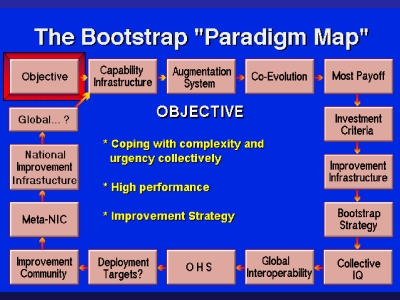 Fig.
1
Fig.
1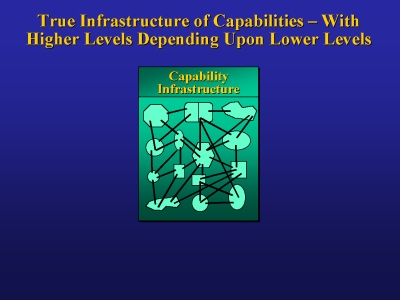 Fig.
2
Fig.
2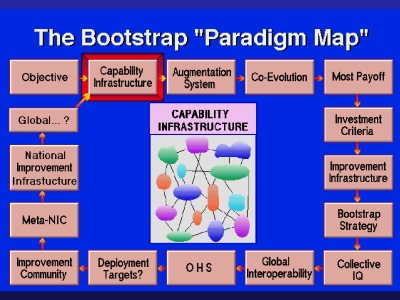 Fig.
3
Fig.
3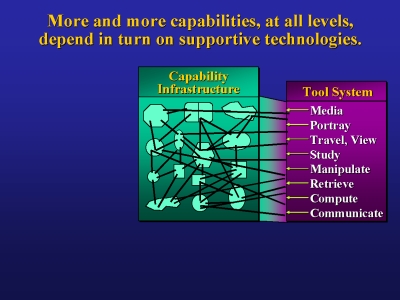 Fig.
4
Fig.
4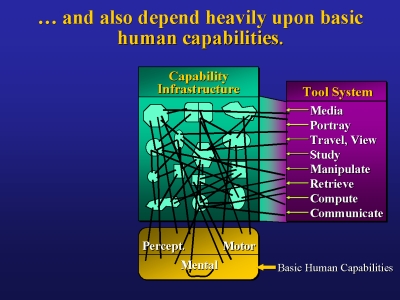 Fig.
5
Fig.
5 Fig. 6
Fig. 6 Fig.
7
Fig.
7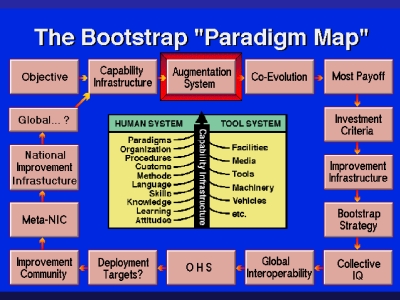 Fig.
8
Fig.
8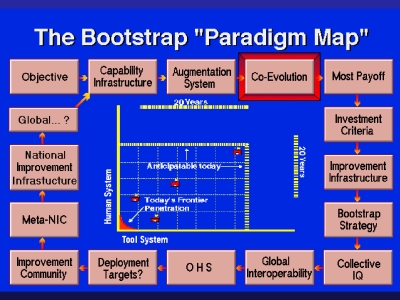 Fig.
9
Fig.
9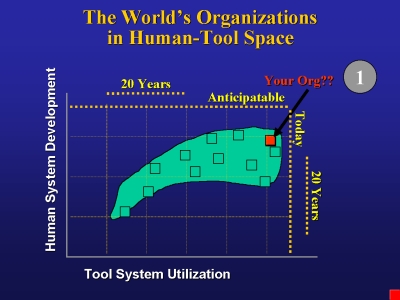 Fig.
10
Fig.
10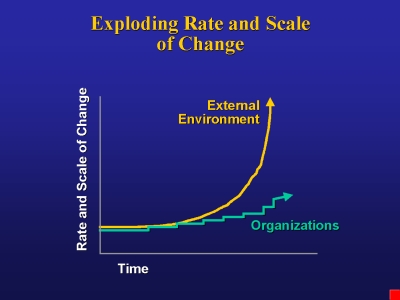 Fig.
11
Fig.
11
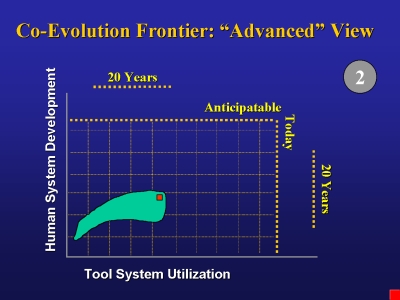 Fig.
12
Fig.
12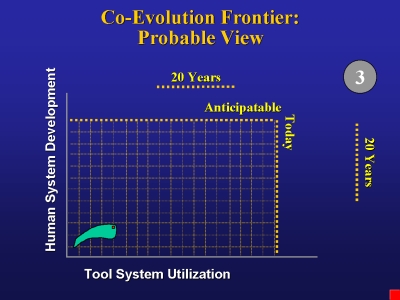 Fig.
13
Fig.
13 Fig.
14
Fig.
14
 Fig.
15
Fig.
15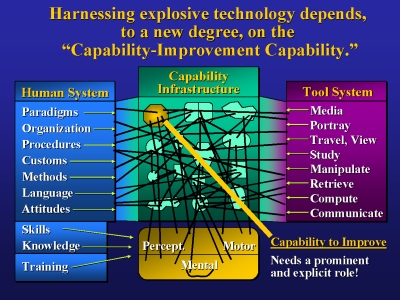 Fig.
16
Fig.
16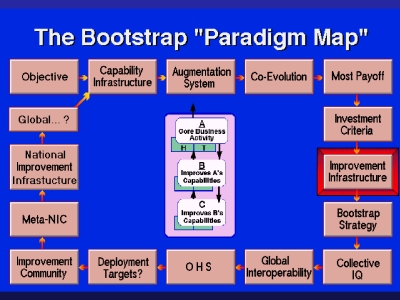 Fig.
17
Fig.
17 Fig.
18
Fig.
18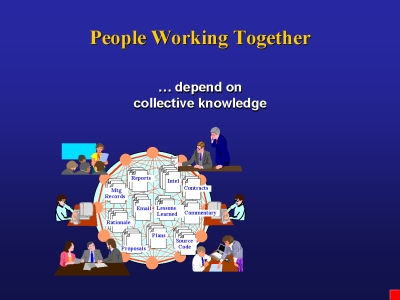 Fig.
19
Fig.
19 Fig.
20
Fig.
20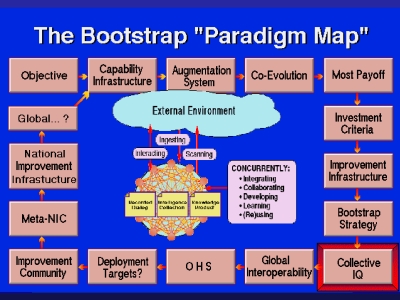 Fig.
21
Fig.
21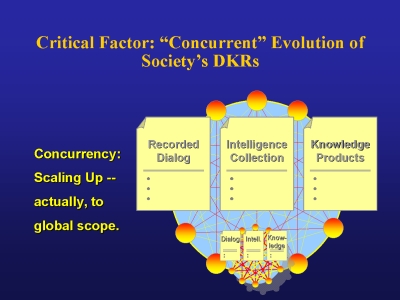 Fig.
22
Fig.
22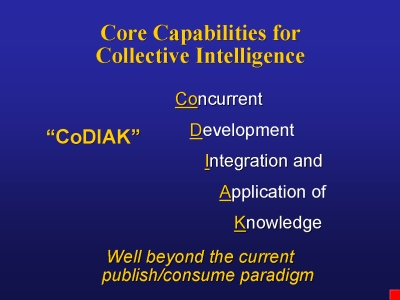 Fig.
23
Fig.
23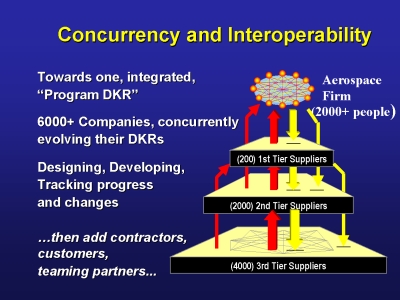 Fig.
24
Fig.
24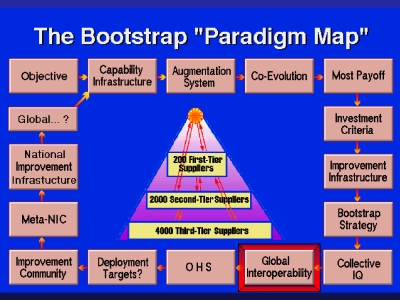 Fig.
25
Fig.
25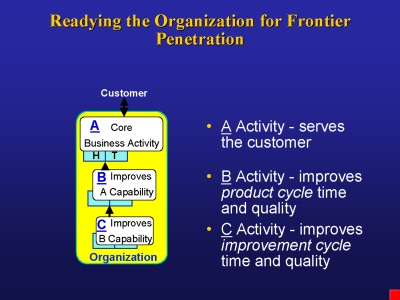 Fig.
28
Fig.
28 Fig.
31
Fig.
31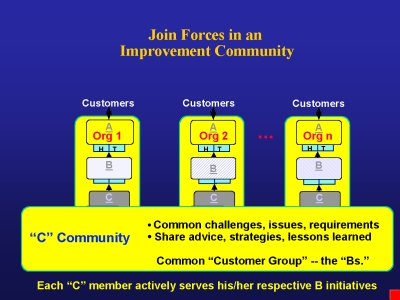 Fig.
32
Fig.
32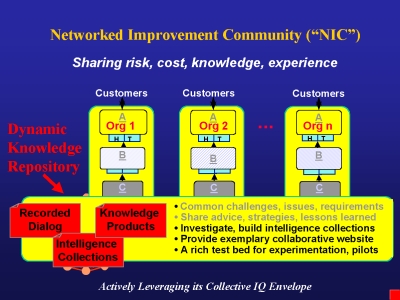 Fig.
33
Fig.
33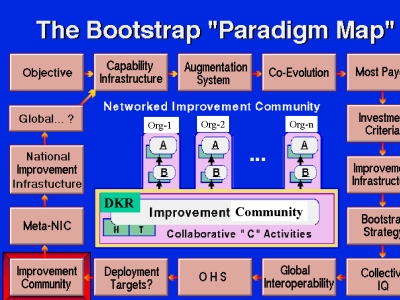 Fig.
34
Fig.
34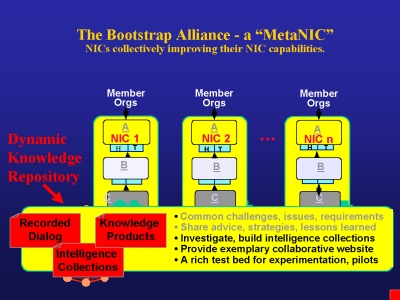 Fig.
35
Fig.
35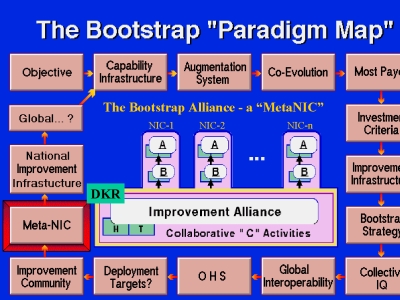 Fig.
36
Fig.
36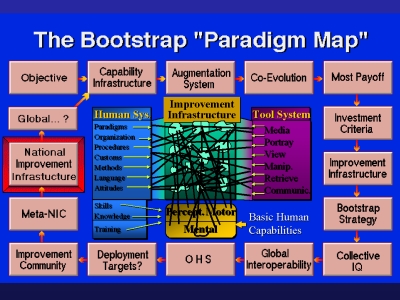 Fig.
37
Fig.
37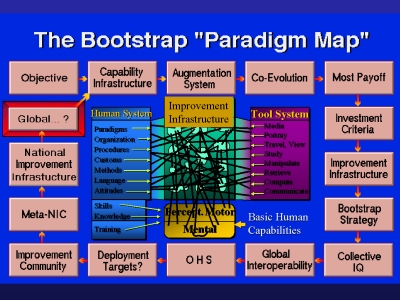 Fig.
38
Fig.
38 Fig.
39
Fig.
39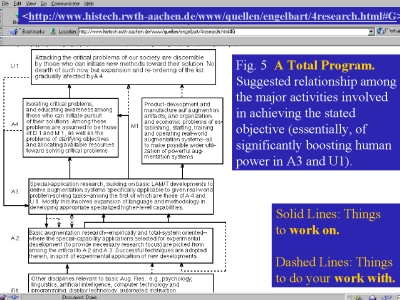 Fig.
40
Fig.
40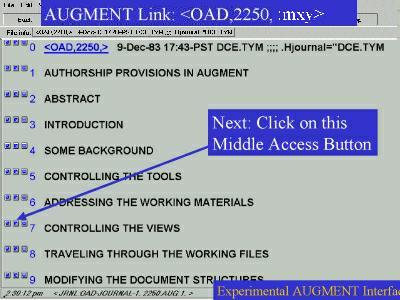 Fig.
41
Fig.
41 Fig.
42
Fig.
42 Fig.
43
Fig.
43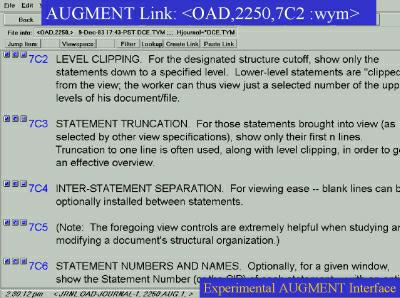 Fig.
44
Fig.
44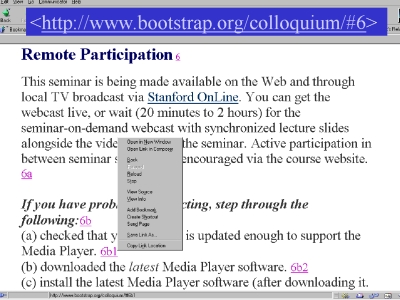 Fig.
45
Fig.
45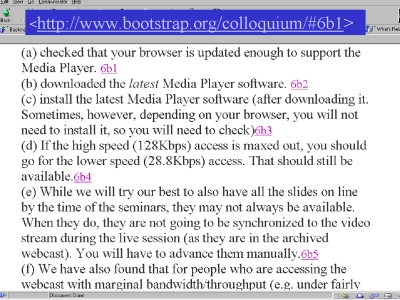 Fig.
46
Fig.
46 Fig.
47
Fig.
47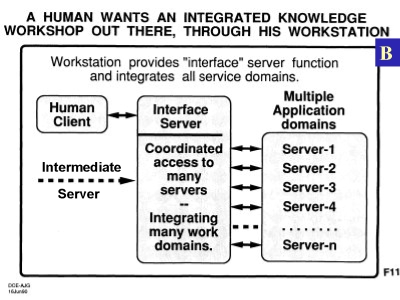 Fig.
48
Fig.
48 Fig.
49
Fig.
49 Fig.
50
Fig.
50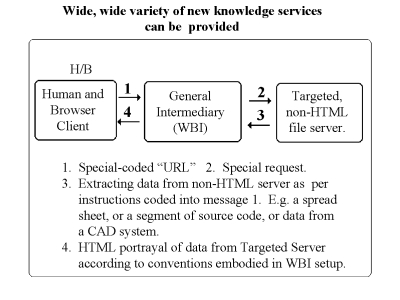 Fig.
51
Fig.
51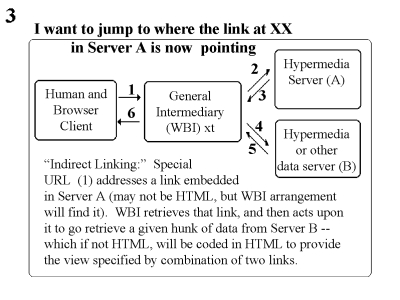 Fig.
52
Fig.
52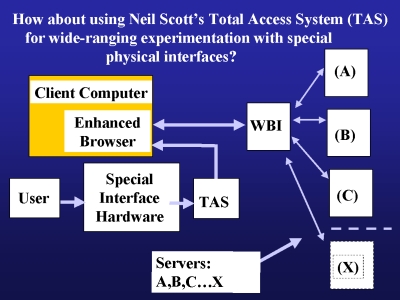 Fig.
53
Fig.
53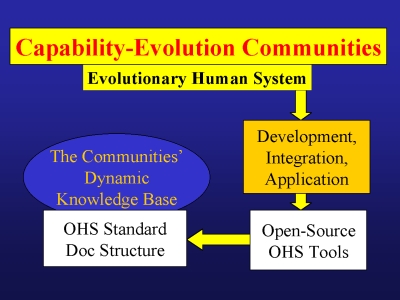 Fig.
54
Fig.
54